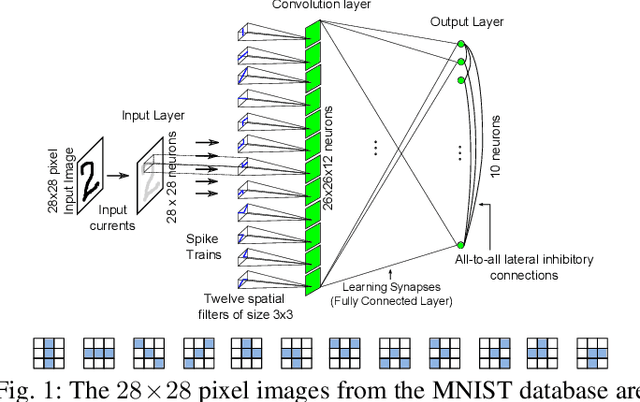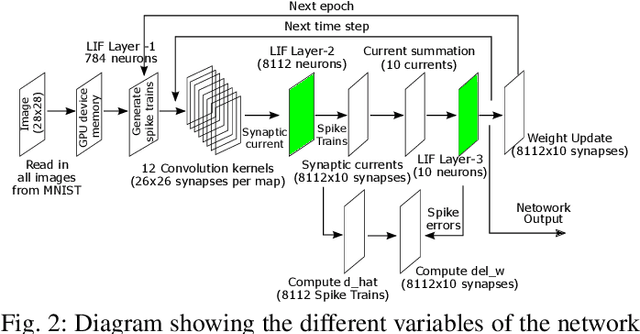Shruti R. Kulkarni
On-Sensor Data Filtering using Neuromorphic Computing for High Energy Physics Experiments
Jul 20, 2023



Abstract:This work describes the investigation of neuromorphic computing-based spiking neural network (SNN) models used to filter data from sensor electronics in high energy physics experiments conducted at the High Luminosity Large Hadron Collider. We present our approach for developing a compact neuromorphic model that filters out the sensor data based on the particle's transverse momentum with the goal of reducing the amount of data being sent to the downstream electronics. The incoming charge waveforms are converted to streams of binary-valued events, which are then processed by the SNN. We present our insights on the various system design choices - from data encoding to optimal hyperparameters of the training algorithm - for an accurate and compact SNN optimized for hardware deployment. Our results show that an SNN trained with an evolutionary algorithm and an optimized set of hyperparameters obtains a signal efficiency of about 91% with nearly half as many parameters as a deep neural network.
Learning and Real-time Classification of Hand-written Digits With Spiking Neural Networks
Nov 09, 2017



Abstract:We describe a novel spiking neural network (SNN) for automated, real-time handwritten digit classification and its implementation on a GP-GPU platform. Information processing within the network, from feature extraction to classification is implemented by mimicking the basic aspects of neuronal spike initiation and propagation in the brain. The feature extraction layer of the SNN uses fixed synaptic weight maps to extract the key features of the image and the classifier layer uses the recently developed NormAD approximate gradient descent based supervised learning algorithm for spiking neural networks to adjust the synaptic weights. On the standard MNIST database images of handwritten digits, our network achieves an accuracy of 99.80% on the training set and 98.06% on the test set, with nearly 7x fewer parameters compared to the state-of-the-art spiking networks. We further use this network in a GPU based user-interface system demonstrating real-time SNN simulation to infer digits written by different users. On a test set of 500 such images, this real-time platform achieves an accuracy exceeding 97% while making a prediction within an SNN emulation time of less than 100ms.
 Add to Chrome
Add to Chrome Add to Firefox
Add to Firefox Add to Edge
Add to Edge